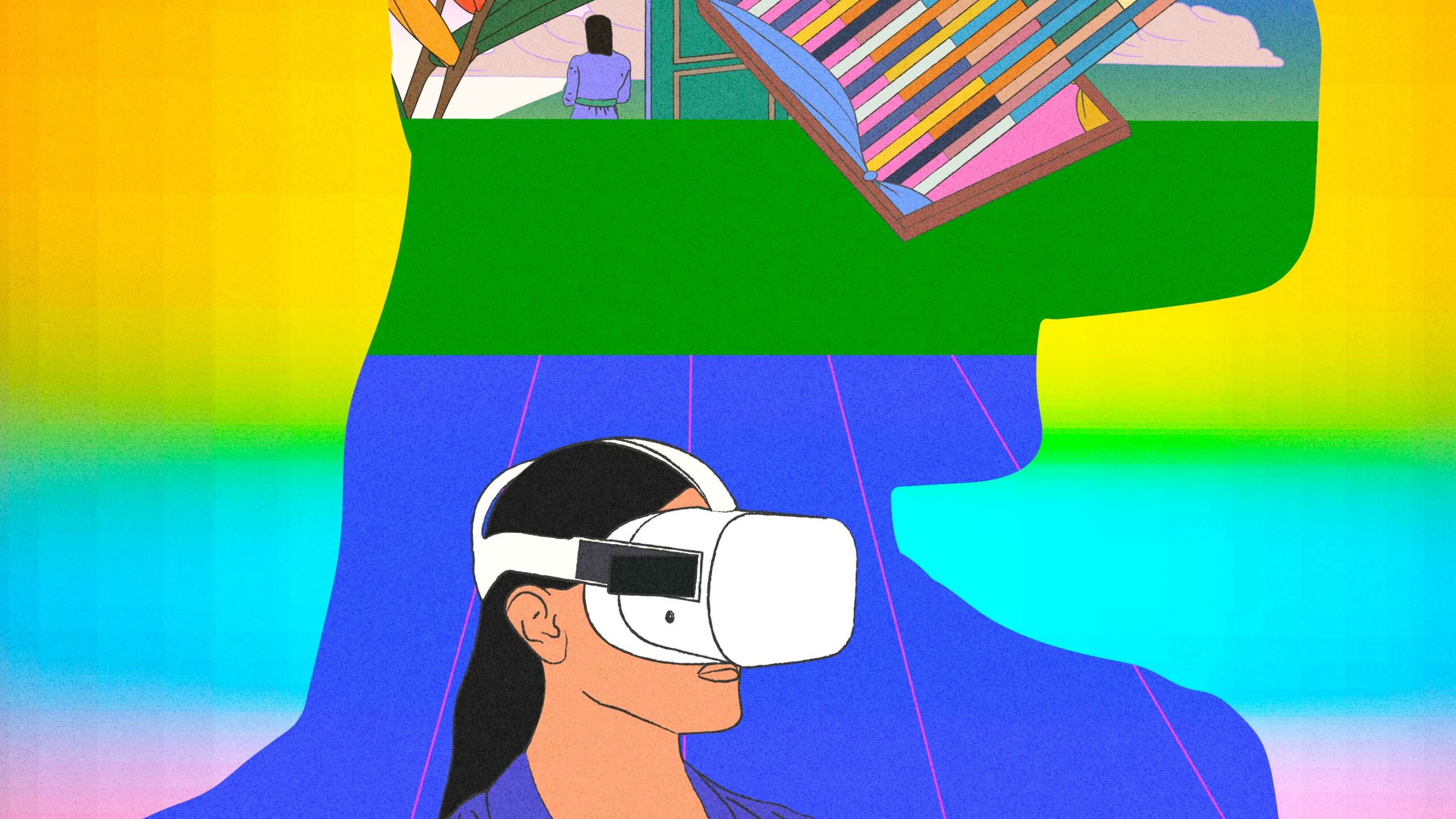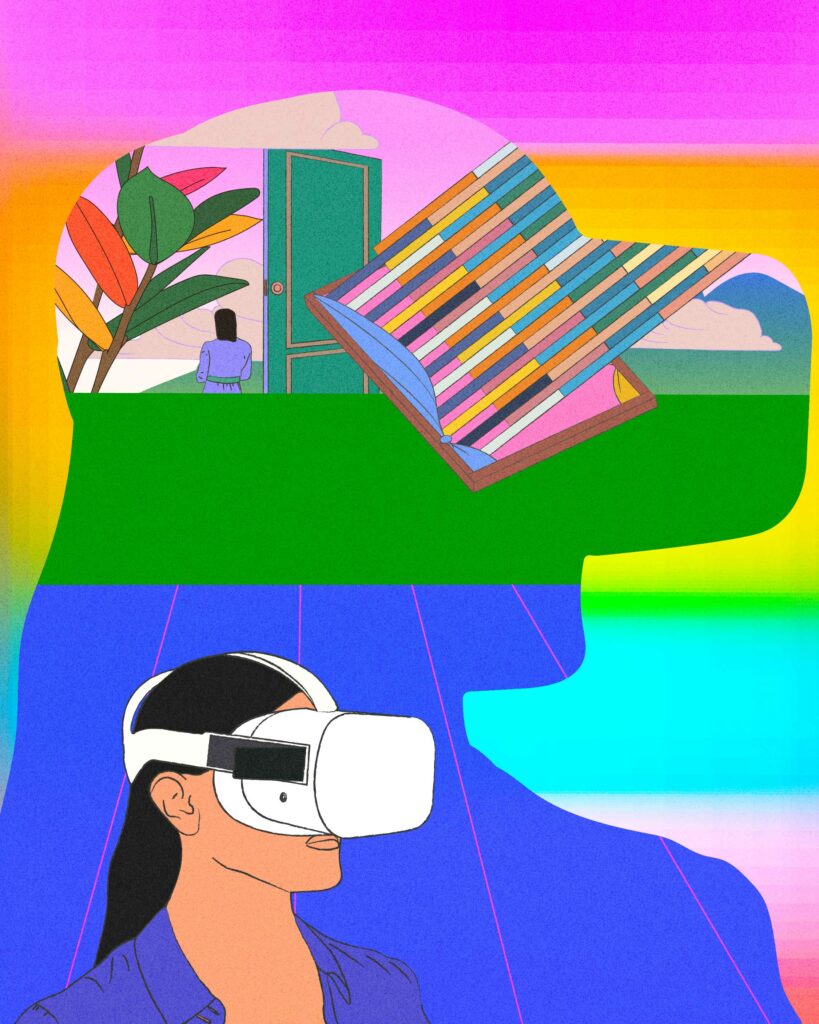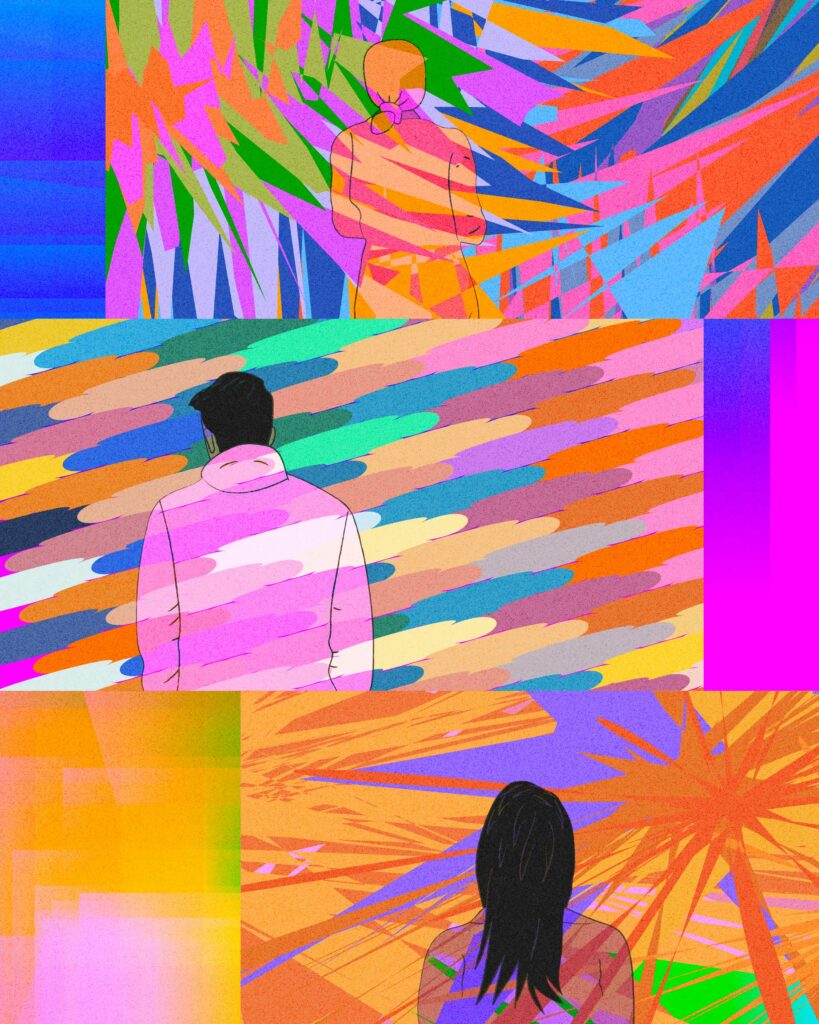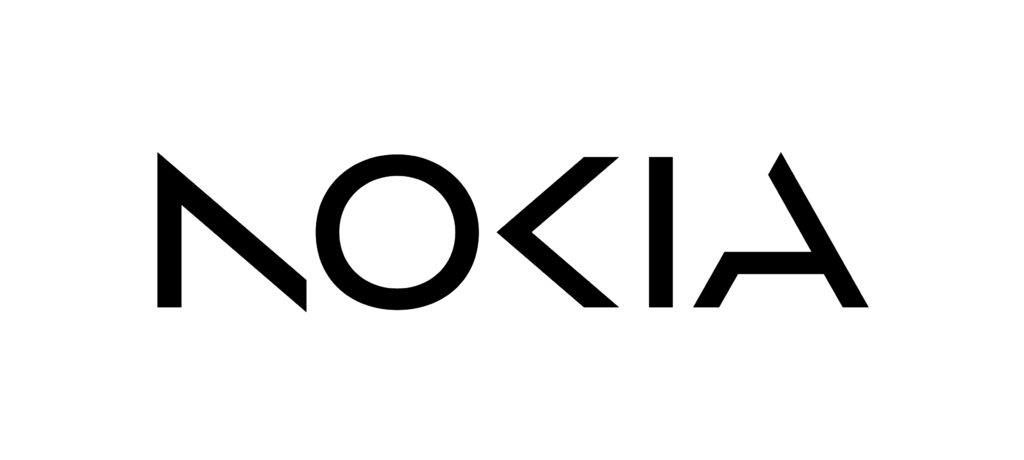Virtual Reality Explained

Illustration: Sebastian Cestaro
Long before the excitement around the Metaverse started, technologies such as virtual reality (VR) and augmented reality (AR) had already gathered a lot of hype. Over time, other terms such as mixed reality (MR) and extended reality (XR) have also entered the mix, adding to the curiosity – and possibly confusion.
So what are virtual reality, augmented reality, mixed reality and extended reality? How are they different from each other? Follow the Millennium Technology Prize’s simple explanation.
What is virtual reality?
It is helpful to think of VR, AR and MR existing on a spectrum spanning from “reality” to “virtuality”. Reality refers to the real environment, with real objects, that we interact with every day – from trees to people. Virtuality, on the other hand, refers to a completely computer-generated environment that does not actually exist.
Virtual reality lies on the virtuality end of the spectrum. Users interact with a completely computer-generated or virtual environment, with virtual objects. It allows the user to have 3D interactions within the virtual environment.

A headset or smart glasses are required to see virtual environments and objects. Depending on the level of virtual interaction, other equipment, such as special cameras, wired gloves and motion sensors may be needed.
The virtual environment can be an imaginary setting – such as a game – or it can be a simulation of a real space. However, for the duration of the interaction, it completely replaces the real environment.
For example, imagine you would like to buy a new outfit. With virtual reality, you may be able to enter a simulation of a store, with artificial outfits, and put them on a virtual mannequin (or even a virtual avatar of yourself) to see if you like them. However, in most VR applications, you would not be able to actually try the outfit to see if it fits, or examine how the material feels.
What is augmented reality?
Augmented reality comes closer to the “reality” end than the “virtuality” end of the spectrum. Like VR, it involves computer-generated objects. Unlike virtual reality, however, these objects do not exist in a virtual environment. Instead, they appear as an overlay on – or on top of – the real environment.
Objects in a VR environment can typically interact with each other. However, objects in AR cannot interact with those in the real environment.
Imagine again you are buying a new outfit, except this time, you are browsing a catalogue. With augmented reality, you can have a simulation of the outfit appear in front of you so that you can see it in 3D instead of trying to decide from just seeing the image of the outfit in the catalogue. However, you cannot try to place the outfit on your friend, or a mannequin, or a reflection of yourself in the mirror, to see how it would look when worn.

What is Extended Reality?
Extended reality has emerged as an umbrella-term to refer to all virtual simulation technologies – VR, AR and MR. However, as with the debate between augmented reality and mixed reality, the usage of XR is not fixed. People often use VR instead of XR to refer to all such technologies.
What are the uses of VR, AR and MR?
VR, AR and MR have commonly been employed in entertainment and gaming. However, they are now being used in other practical applications as well. VR, AR and MR can all be used to conduct training for surgeons to practise and plan an operation, or for engineers to practise repairs or plan the creation of a new technology.
During an operation itself, augmented or mixed reality can be used to project the X-Ray or CT scans of the patient over the area being operated along. This helps surgeons work with greater accuracy without the distraction of switching back and forth between the patient and the screens displaying the scans.
AR can also be used to compare the plan of a machine or a device with the actual machine and device itself, to check accuracy and performance without needing to run the equipment through testing. Augmented reality can make navigation easier, too. It can provide an overlay of directions and suggested paths on a map as you move towards your destination.
While more people are turning to flexible and remote working, there are also many who miss the collaboration you get in offices. Mixed reality can make both these options possible. It can allow participants to speak and meet with virtual simulations of their colleagues no matter where they are located, enabling stronger interpersonal communication and collaboration while allowing everyone to work from their preferred environment.
VR can be especially useful for education as it makes learning more interactive and engaging. It can also be used for conducting bias and sensitivity training for promoting diversity, equality and inclusion as it allows the trainee to completely immerse themselves into the scenario.
Psychiatrists are exploring the use of virtual reality in treating phobias. Games based on VR technology can also be used to help patients manage attention deficit hyperactivity disorder, and treat depression and post-traumatic stress disorder (PTSD). VR can even help people with disabilities access or experience spaces and events that they otherwise might not be able to.
Amid growing concerns over the sustainability of modern tourism and carbon emissions from air travel, VR can offer people the chance to explore a location or a tourist hotspot without physically travelling there.













